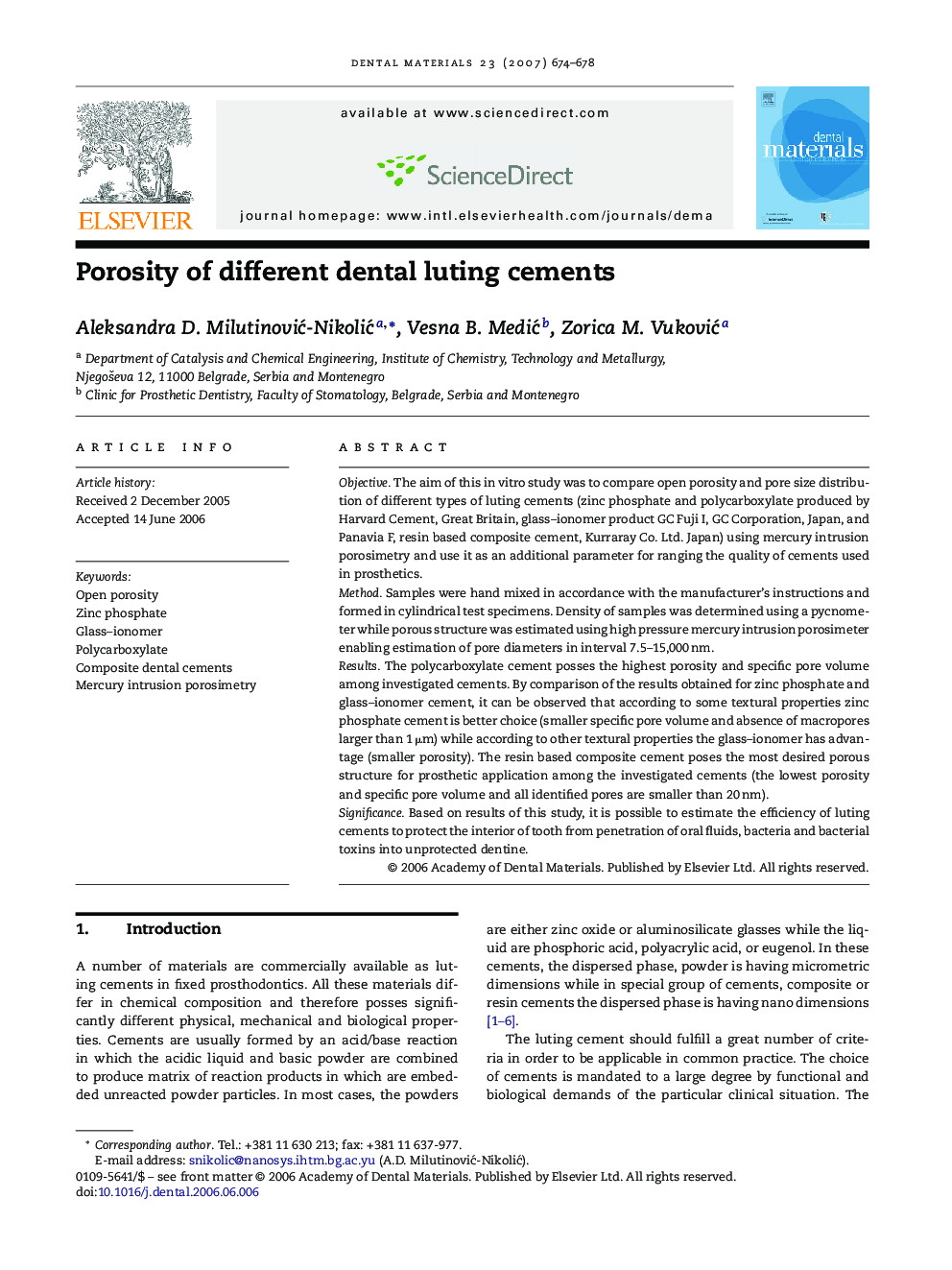| کد مقاله | کد نشریه | سال انتشار | مقاله انگلیسی | نسخه تمام متن |
|---|---|---|---|---|
| 1423327 | 986508 | 2007 | 5 صفحه PDF | دانلود رایگان |

ObjectiveThe aim of this in vitro study was to compare open porosity and pore size distribution of different types of luting cements (zinc phosphate and polycarboxylate produced by Harvard Cement, Great Britain, glass–ionomer product GC Fuji I, GC Corporation, Japan, and Panavia F, resin based composite cement, Kurraray Co. Ltd. Japan) using mercury intrusion porosimetry and use it as an additional parameter for ranging the quality of cements used in prosthetics.MethodSamples were hand mixed in accordance with the manufacturer's instructions and formed in cylindrical test specimens. Density of samples was determined using a pycnometer while porous structure was estimated using high pressure mercury intrusion porosimeter enabling estimation of pore diameters in interval 7.5–15,000 nm.ResultsThe polycarboxylate cement posses the highest porosity and specific pore volume among investigated cements. By comparison of the results obtained for zinc phosphate and glass–ionomer cement, it can be observed that according to some textural properties zinc phosphate cement is better choice (smaller specific pore volume and absence of macropores larger than 1 μm) while according to other textural properties the glass–ionomer has advantage (smaller porosity). The resin based composite cement poses the most desired porous structure for prosthetic application among the investigated cements (the lowest porosity and specific pore volume and all identified pores are smaller than 20 nm).SignificanceBased on results of this study, it is possible to estimate the efficiency of luting cements to protect the interior of tooth from penetration of oral fluids, bacteria and bacterial toxins into unprotected dentine.
Journal: Dental Materials - Volume 23, Issue 6, June 2007, Pages 674–678